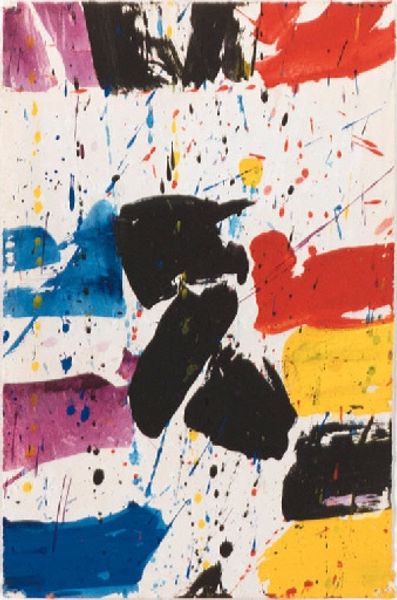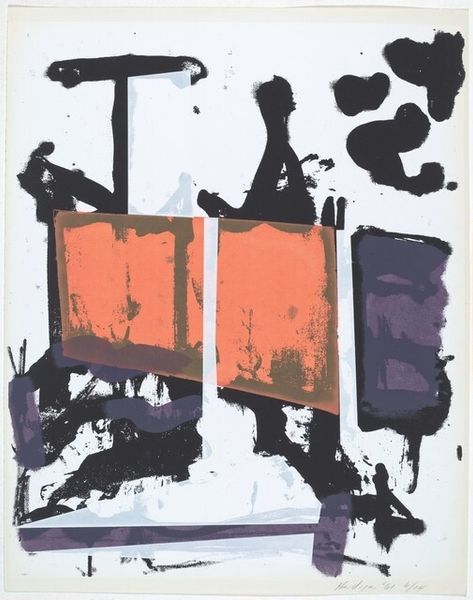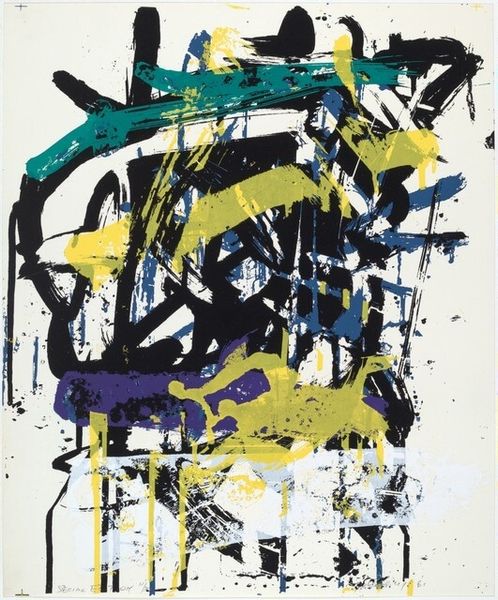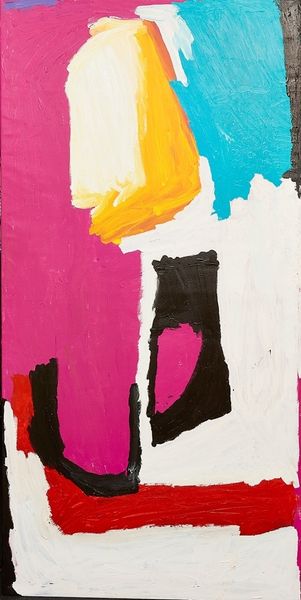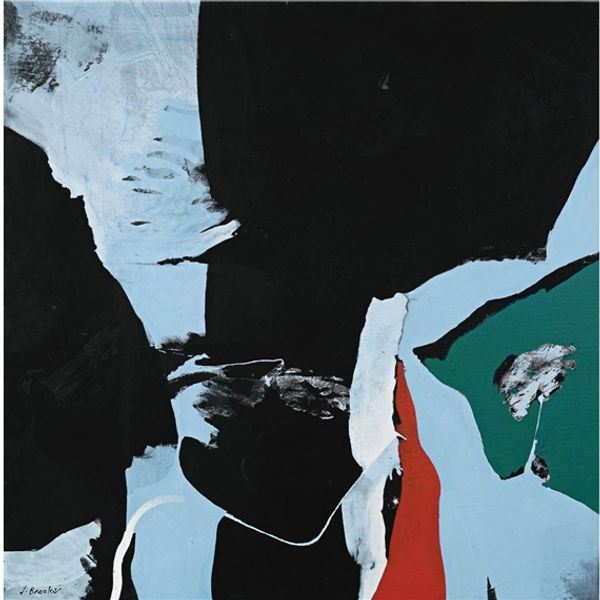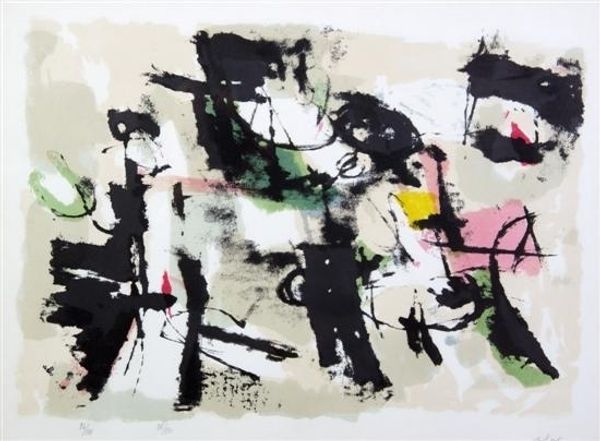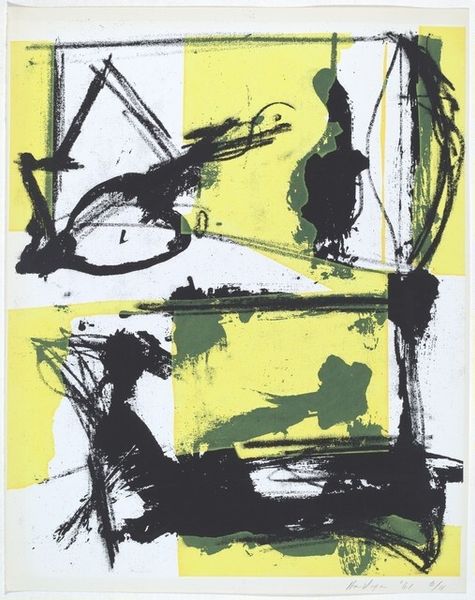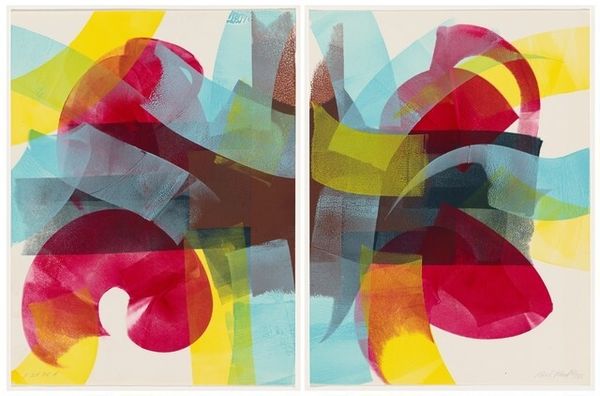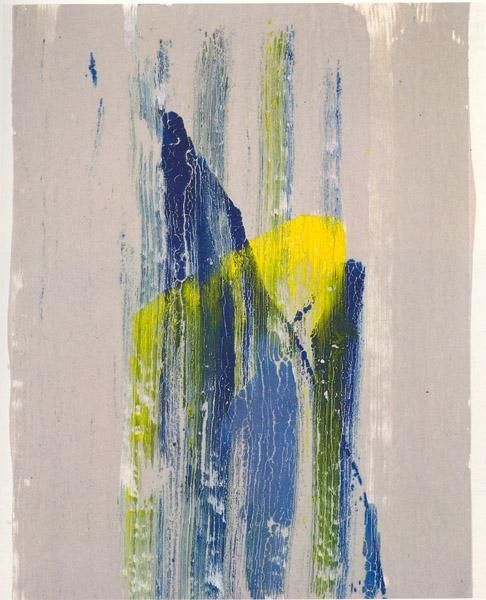
mixed-media, painting
#
mixed-media
#
painting
#
mixed mediaart
#
digital print
#
abstraction
#
cityscape
#
modernism
Copyright: Wu Guanzhong,Fair Use
Curator: We’re looking at Wu Guanzhong’s "Houses of the South," a mixed-media work created in 2007. Editor: Immediately, it’s a kind of playful, abstracted cityscape that draws you in with its almost musical balance of shapes and strokes. The composition vibrates, doesn’t it? It’s both calming and stimulating all at once. Curator: Indeed. Wu Guanzhong, even into his later years, remained committed to a modernist synthesis—attempting to bridge the divide between Eastern and Western aesthetic traditions through form and material. He trained in both China and Paris. Editor: That explains the familiar but foreign feel. The sharp lines remind me of certain modern architecture, maybe some brutalist stuff, but the strokes, the splashes of color...that's a different story. They lend this urban scene a strange intimacy. I keep thinking of a flock of birds nestled amongst the roofs of buildings, those colored splashes are like life affirming signifiers amid the neutral landscape. Curator: You touch on something crucial to understanding Wu. Even when working with cityscapes, as here, his ultimate project involved conveying a sense of vital, organic life force on the picture plane, what the Chinese traditionally refer to as "qi". It’s interesting to consider the cultural context. Remember that much of modern Chinese art grapples with rapid urbanization and the push-pull dynamic of embracing modernity without erasing cultural heritage. Wu Guanzhong occupied an important role during this historical transformation, mediating those conflicting impulses through abstraction. Editor: He succeeded, I think. The limited color palette actually amplifies the overall sense of vitality. If the whole thing were saturated, I don’t think it would evoke the same reaction. It's a gentle encouragement, you know? Curator: Absolutely. Looking at this now, especially understanding its historical moment, it represents so much about how the legacy of landscapes in Chinese painting practice, with modern art concerns regarding abstraction, came together within an artist’s personal language. Editor: It's not just buildings; it's also about how the artist is filtering his whole cultural history. It reminds me that even in urban landscapes, it's important to pause, be receptive, and discover that strange vitality in all of us.
Comments
No comments
Be the first to comment and join the conversation on the ultimate creative platform.


